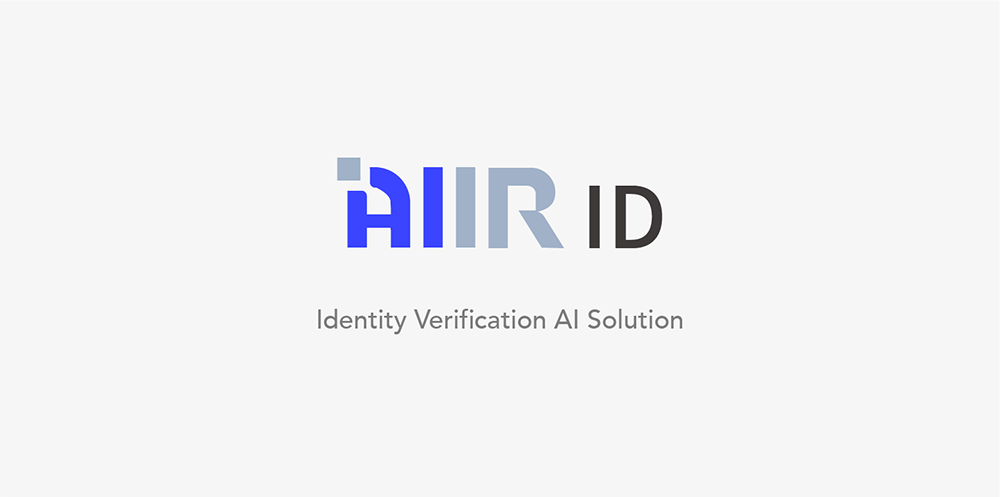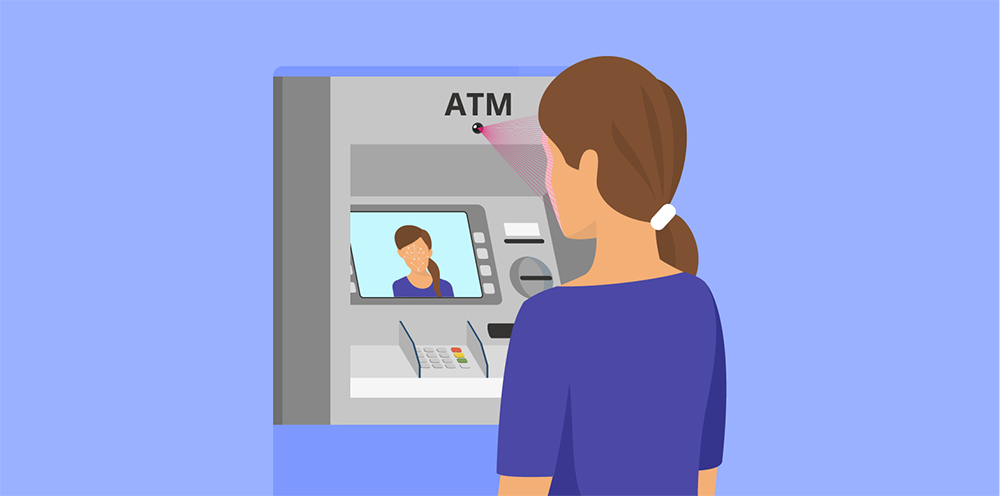User Experience: How Facial Recognition is Simplifying Banking
ALCHERA
September 19, 2023
September 19, 2023
AI Facial Recognition in Banking: A New Era of User Experience
Table of Contents
Introduction to User Experience and AI Facial Recognition in Banking
The Evolution of User Authentication in Banking
- Traditional authentication methods: passwords and PINs
- Limitations and security concerns with traditional methods
- Rise of biometric authentication
Understanding AI Facial Recognition Technology
- How AI facial recognition works
- Components of AI facial recognition systems
- Recent advancements in AI facial recognition accuracy and speed
Benefits of AI Facial Recognition in Banking
- Enhanced security and fraud prevention
- Streamlined user experience
- Elimination of the need for physical documents
- Personalization of services based on customer recognition
Implementing Facial Recognition in Banking Processes
- User enrollment and data protection
- Integration with existing banking systems
- Privacy concerns and regulatory compliance
AI Facial Recognition Technology for Banks: AIIR ID by ALCHERA
Overcoming Challenges and Concerns in AI Facial Recognition
- Ensuring inclusivity and accessibility
- Dealing with false positives and negatives
- Handling data breaches and security vulnerabilities
The Future of Facial Recognition in Banking
- Continuous improvements in technology of AI facial recognition
- Integration of AI facial recognition with other emerging technologies
- Anticipated changes in regulations and standards of AI facial recognition

Introduction to User Experience and AI Facial Recognition in Banking
In the intricate realm of banking, the concept of user experience extends beyond mere functionality; it also encompasses the emotional and psychological aspects of every interaction customers have with financial services. Excellent user experience in banking requires ease in accessing accounts, simplicity in conducting transactions, clarity in information presentation, and high overall satisfaction derived from these interactions. It's about transforming routine tasks into seamless, enjoyable journeys that foster customer loyalty and trust.
The imperative to simplify banking processes is underscored by the evolving expectations of customers in the digital age. Lengthy procedures involving multiple passwords, complex authentication steps, and the need for physical documents can mar the user experience. As customers gravitate toward convenience, the demand for streamlined interactions intensifies. Facial recognition technology enters the scene as a transformative solution, redefining the way users engage with banking services.
The Evolution of User Authentication in Banking
Traditional authentication methods: passwords and PINs
For decades, the bedrock of user authentication in banking has been traditional methods like passwords and Personal Identification Numbers (PINs). These alphanumeric combinations have served as the digital keys granting users access to their accounts and enabling financial activities. Users input these strings of characters to verify their identities and gain entry into their accounts.
These methods, while familiar and widely used, have intrinsic challenges. Users often struggle with memorizing numerous passwords for various accounts, leading to the dangerous practice of reusing passwords across platforms. Additionally, passwords can be easily forgotten or lost, causing users to resort to insecure recovery processes or to seek customer support assistance. Furthermore, the rise of sophisticated hacking techniques and data breaches has exposed the vulnerabilities of these conventional methods, putting user accounts and sensitive information at risk.
Limitations and security concerns with traditional methods
The limitations of passwords and PINs have become evident as the digital landscape has evolved. Security concerns are multifaceted. Passwords can be weak, easily guessed, or hacked through brute-force attacks. Phishing attacks capitalize on users' susceptibility to manipulation, leading to compromised credentials. Additionally, users' tendency to recycle passwords across multiple accounts amplifies the potential damage of a security breach.
The vulnerabilities associated with traditional methods are not solely due to external threats. Users themselves can inadvertently expose their credentials through poor password management or falling victim to social engineering tactics. As a result, banks have been seeking more robust and user-friendly alternatives to enhance security without compromising user experience.
Rise of biometric authentication
Recognizing the limitations and security gaps inherent in traditional authentication, the financial sector has embraced biometric authentication as a cutting-edge solution. Biometrics harness unique physical and behavioral attributes of individuals to establish identity, thereby providing a more secure and seamless authentication process.
Biometric authentication encompasses a range of distinctive attributes, including fingerprints, voice patterns, retinal scans, and facial characteristics. Among these, facial recognition technology has gained significant traction. This technology captures and analyzes various facial features such as the distance between eyes, the shape of the nose, and the contours of the face. This information is then transformed into a mathematical representation, or "faceprint," which serves as a digital signature.
Advantages of biometrics over traditional methods
Biometric authentication offers a multitude of advantages over traditional methods. First, it substantially enhances security. Unlike passwords, biometric traits are intrinsic to an individual and significantly harder to forge. This dramatically reduces the likelihood of unauthorized access due to compromised credentials. Second, biometric methods simplify the user experience. Users don't need to remember complex passwords; they simply need to present their unique biological attributes. Finally, the accuracy of biometric systems reduces the chances of false positives and negatives, further enhancing security and usability.
The transition from traditional to biometric authentication in banking is a significant step forward in aligning security and user experience. This shift is not just about replacing passwords; it's about creating a more secure, convenient, and user-centric banking ecosystem.
Understanding AI Facial Recognition Technology
How AI facial recognition works
Facial recognition technology operates at the intersection of computer vision and biometrics. The process begins with capturing an image or video of a person's face, which is then subjected to a series of intricate computational steps to identify and verify their identity. These steps involve hardware and software components working in tandem.
The fundamental principle behind facial recognition is analyzing and quantifying unique facial features. The system breaks down the facial structure into key data points, such as the distance between eyes, the angle of the nose, and the shape of the jawline. These data points are then converted into a numerical representation, often referred to as a "faceprint" or "template." This template is unique to each individual and serves as a digital signature for identity verification.
Components of AI facial recognition systems
Facial recognition systems consist of several essential components that collaborate to deliver accurate and efficient results:
-
Capture device: This could be a camera or a sensor that captures facial images or videos. High-quality capture is crucial for obtaining reliable data.
-
Preprocessing: The captured image or video undergoes preprocessing, including normalization, alignment, and noise reduction. This step ensures that the input data is consistent and ready for analysis.
-
Feature extraction: During this phase, the system identifies key facial landmarks, such as the positions of eyes, nose, and mouth. These landmarks are used to create a unique mathematical representation of the face.
-
Template creation: The extracted facial features are transformed into a numerical template. This template becomes the basis for comparison and matching.
-
Database: The system maintains a database of templates associated with authorized users. When a person attempts authentication, their template is compared against the templates in the database.
-
Matching algorithm: The system employs sophisticated algorithms to compare the templates and measure the similarity between the captured face and the stored templates.
-
Decision threshold: The matching result is compared against a predefined threshold to determine whether the individual's face is a match. This threshold balances security and usability.
Recent advancements in AI facial recognition accuracy and speed
Facial recognition technology has witnessed remarkable advancements in recent years, particularly in terms of accuracy and speed. These advancements have been driven by breakthroughs in machine learning, deep neural networks, and hardware capabilities.
Modern facial recognition systems can handle variations in lighting conditions, facial expressions, and angles, improving accuracy across diverse scenarios. Additionally, advancements in hardware, such as specialized processors for facial recognition tasks, have accelerated processing speeds. This has led to real-time identification capabilities, allowing for swift authentication without compromising accuracy.
The integration of artificial intelligence and machine learning has enabled facial recognition systems to continuously learn and adapt, refining their accuracy over time. These innovations collectively contribute to the transformation of facial recognition from a concept into a practical and reliable authentication tool within the banking landscape.
As we move forward, we will explore the benefits that facial recognition technology brings to the banking sector. Its ability to enhance security, streamline user experiences, and revolutionize traditional banking processes positions it as a pivotal force shaping the future of financial interactions.
Benefits of AI Facial Recognition in Banking
Enhanced security and fraud prevention
Facial recognition technology offers a quantum leap in security compared to traditional authentication methods. While passwords and PINs can be stolen, forgotten, or hacked, biometric traits are uniquely tied to each individual. This inherent individuality makes it significantly harder to gain unauthorized access, as an imposter would need to replicate the precise facial features of the account holder. In the realm of banking, wherein safeguarding sensitive financial information is paramount, facial recognition acts as a robust barrier against fraud and identity theft.
Furthermore, the real-time nature of facial recognition adds an extra layer of security. Attempts to impersonate or deceive the system using photographs or videos are thwarted through liveness detection, which verifies the liveliness of the subject's face.
Streamlined user experience
One of the most compelling advantages of facial recognition in banking is its ability to streamline the user experience. The need to remember intricate passwords or PINs is eliminated, paving the way for a frictionless interaction. Users simply need to present their face, which is something they already naturally do in everyday life. This ease of use not only reduces user frustration but also encourages wider adoption of banking services.
The speed of facial recognition technology ensures that transactions can be completed swiftly, enhancing the efficiency of everyday banking tasks. Additionally, facial recognition can be seamlessly integrated into mobile banking apps, providing users with secure and convenient access to their accounts from anywhere.
Elimination of the need for physical documents
The integration of facial recognition in banking extends beyond user authentication—it also revolutionizes document verification. Traditionally, banks require customers to provide physical documents such as IDs, passports, and utility bills to verify their identity. This process is not only time-consuming but can also be susceptible to fraud.
Facial recognition technology enables remote identity verification through a simple scan of the face. Users can open accounts, apply for loans, or conduct other transactions without the need for physical documents. This not only expedites processes but also enhances the customer experience by reducing paperwork and visits to physical branches.
Personalization of services based on customer recognition
In the digital age, customers value personalized experiences. Facial recognition empowers banks to deliver just that. When a customer's face is recognized upon authentication, the bank can tailor the user experience accordingly. Personalized greetings, targeted offers, and customized recommendations can be presented to the customer, elevating the banking journey from transactional to relational.
Implementing Facial Recognition in Banking Processes
User enrollment and data protection
Implementing facial recognition in banking commences with the critical phase of user enrollment. During this process, users' facial templates are captured and stored securely. It's imperative that robust data protection measures are in place to safeguard this sensitive biometric information. Banks must adhere to stringent security protocols to prevent unauthorized access to this data.
To ensure user trust, transparency about data usage and storage is essential. Banks should provide clear explanations about how facial data will be used, who will have access to it, and the steps taken to protect it. Offering users the ability to control their data and providing options for data deletion are crucial for fostering a sense of control and security.
Integration with existing banking systems
Integrating facial recognition seamlessly with existing banking systems is pivotal to ensure a consistent and coherent user experience. This involves technical integration of facial recognition algorithms with the bank's digital interfaces and applications. The goal is to make the transition from traditional authentication methods to facial recognition as smooth as possible.
A key consideration is ensuring compatibility with a wide range of devices, from smartphones to ATMs to in-branch kiosks. This universality allows users to experience the convenience of facial recognition across various touchpoints, contributing to the overall enhancement of the banking experience.
Privacy concerns and regulatory compliance
Facial recognition inherently raises privacy concerns due to the intimate nature of biometric data. Banks must adopt a proactive approach in addressing these concerns to gain user trust. Communication about how facial data is collected, stored, and used is pivotal. Additionally, banks should institute strict access controls to prevent unauthorized use or sharing of biometric information.
Regulatory compliance is a paramount consideration. Data protection laws, such as GDPR (General Data Protection Regulation), and biometric privacy laws vary by jurisdiction and must be adhered to. Banks should conduct thorough legal assessments to ensure they are compliant with the relevant regulations. This includes obtaining informed consent from users before collecting their facial data and offering options for data management.
Engaging with regulatory bodies and privacy advocates can provide banks with insights into best practices and potential pitfalls in implementing facial recognition systems. Proactively addressing privacy and compliance concerns not only safeguards user rights but also protects the bank from legal repercussions.
AI Facial Recognition Technology for Banks: AIIR ID by ALCHERA

In the ever-evolving landscape of banking technology, AIIR ID by ALCHERA stands as a prime example of how facial recognition is being harnessed to redefine the user experience and security within the financial sector. AIIR ID serves as a testament to the potential of facial recognition to revolutionize traditional banking processes.
AIIR ID is a cutting-edge facial recognition solution developed by ALCHERA, a pioneer in the field of artificial intelligence and biometric authentication. The platform seamlessly integrates facial recognition technology into the fabric of banking operations, unlocking a host of benefits for both financial institutions and their customers.
The key features and benefits of AIIR ID are:
-
Enhanced security: AIIR ID bolsters security by introducing a biometric layer that is inherently tied to each individual. This ensures that only authorized users can access their accounts and perform transactions, mitigating the risk of unauthorized access and identity fraud.
-
Seamless user experience: With AIIR ID, the need for remembering complex passwords or PINs becomes obsolete. Customers can access their accounts with a simple glance, ushering in a new era of frictionless interactions. This contributes to higher customer satisfaction and increased adoption of digital banking services.
-
Real-time authentication: AIIR ID's real-time capabilities offer swift and accurate identity verification. The technology's liveness detection feature ensures that attempts to deceive the system using static images or videos are promptly thwarted.
-
Remote verification: AIIR ID enables remote identity verification, eliminating the need for customers to physically visit a branch for account setup or transaction authentication. This expedites processes and aligns with the trend towards digital banking.
-
Personalization and insights: The integration of AIIR ID allows banks to provide personalized services and offerings based on recognized customer profiles. This level of customization fosters stronger customer relationships and enhances the overall banking experience.
-
Privacy and compliance: AIIR ID places a strong emphasis on privacy and regulatory compliance. With features like transparent data usage and secure storage, ALCHERA prioritizes user trust and ensures alignment with data protection regulations.
The success of AIIR ID underscores the transformative power of facial recognition in banking. By amalgamating security, efficiency, and user-centered design, this solution paves the way for a future where banking interactions are characterized by convenience and trust.
Overcoming Challenges and Concerns in AI Facial Recognition
Ensuring inclusivity and accessibility
While facial recognition technology offers numerous benefits, it's essential to ensure that it is inclusive and accessible to all users, regardless of their physical characteristics. One of the challenges lies in accommodating a diverse range of demographics, including different ethnicities, ages, and genders. Biases can arise if the technology is not trained on a representative dataset, potentially leading to false negatives for certain groups.
To address this challenge, developers need to prioritize diversity in data collection and algorithm training. Rigorous testing across various demographics can help identify and rectify any biases present in the system. Additionally, offering alternative authentication methods, such as PINs or fingerprints, can ensure that users who may face difficulties with facial recognition still have viable options for secure access.
Dealing with false positives and negatives
False positives (authorized users wrongly rejected) and false negatives (unauthorized users wrongly granted access) are inherent challenges in biometric authentication systems, including facial recognition. Striking a balance between security and usability is crucial. An overly stringent system might inconvenience users, while a lenient system could compromise security.
Ongoing refinement of algorithms is necessary to reduce false positives and negatives. Feedback loops that learn from user interactions can help enhance the accuracy of systems. Regular system updates and improvements based on real-world data can lead to a more reliable and user-friendly authentication process.
Handling data breaches and security vulnerabilities
Given the sensitive nature of biometric data, concerns regarding data breaches and security vulnerabilities are paramount. Storing facial templates in a centralized database poses risks, as any breach could lead to compromised user information. Furthermore, attackers might attempt to manipulate the system using sophisticated techniques like deepfakes.
To mitigate these risks, banks and technology providers must implement robust encryption and security measures to safeguard biometric data. Utilizing decentralized storage or secure enclaves can minimize the potential impact of a breach. Regular security audits and assessments help identify vulnerabilities and strengthen the system's defenses.
Additionally, proactive communication with users about security practices and the steps taken to protect their data can foster trust and transparency.
The Future of Facial Recognition in Banking
Continuous improvements in technology of AI facial recognition
The trajectory of facial recognition in banking is marked by a commitment to continuous improvement. Technological advancements will further refine the accuracy, speed, and robustness of facial recognition systems. Machine learning algorithms will continue to evolve, enhancing the ability of systems to adapt to changing environments, lighting conditions, and user appearances.
The development of more sophisticated hardware, such as specialized processors designed for facial recognition tasks, will expedite processing speeds and enable real-time authentication across diverse platforms. These advancements will converge to create a seamless, secure, and intuitive user experience.
Integration of AI facial recognition with other emerging technologies
The synergy between facial recognition and other emerging technologies holds the promise of transformative innovation. The integration of facial recognition with artificial intelligence (AI) will enable systems to become more adaptive and predictive. AI can learn from user behaviors to refine authentication accuracy and customize services.
Anticipated changes in regulations and standards of AI facial recognition
The landscape of facial recognition in banking will inevitably be shaped by evolving regulations and standards. Governments and regulatory bodies are increasingly focusing on data protection and privacy concerns. Anticipated changes may include more stringent requirements for user consent, transparent data usage policies, and mechanisms for users to control their biometric data.
Banking institutions will need to stay agile and proactive in adapting to changing regulatory landscapes. Collaboration between technology providers, regulators, and privacy advocates will play a crucial role in developing ethical guidelines and standards that balance innovation with user rights.
As the journey towards the future unfolds, facial recognition technology's role in banking will extend beyond authentication. It will become an enabler of personalized financial experiences, a guardian of security, and a catalyst for innovation. By embracing these trends and navigating the challenges, the banking industry can usher in an era of enhanced customer trust, seamless interactions, and reimagined financial services.
...
...




